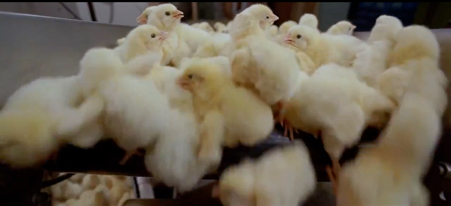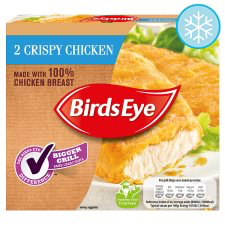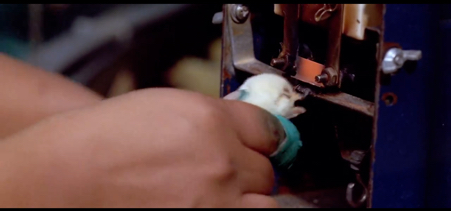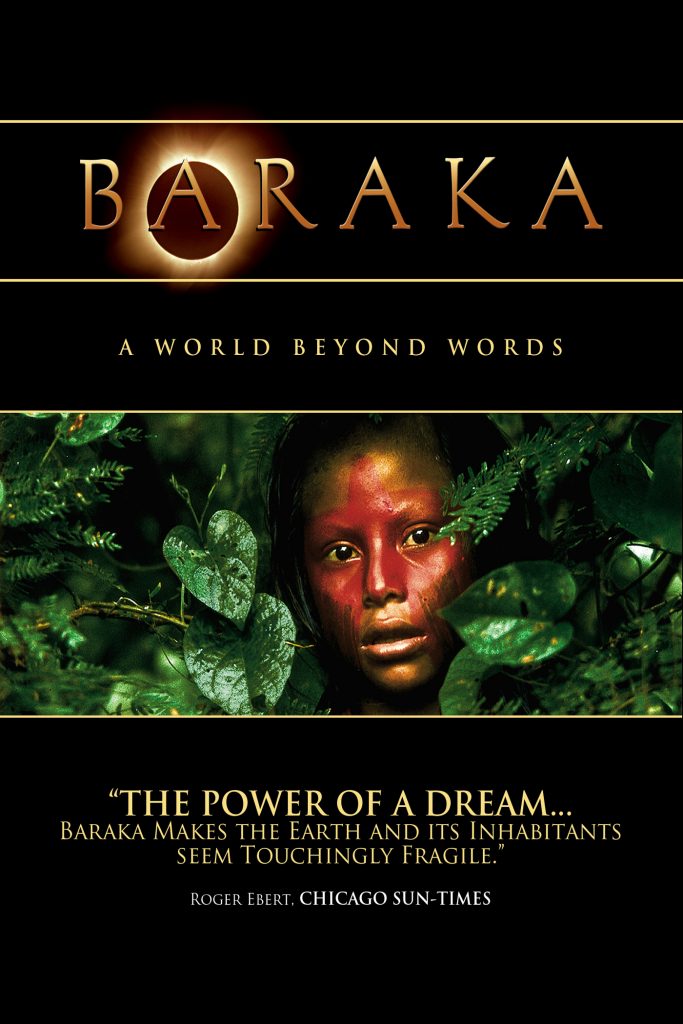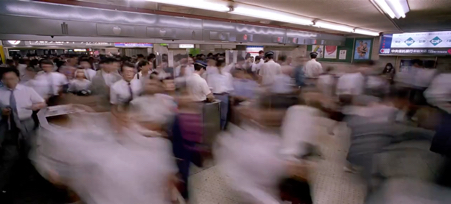Ron Fricke’s 1992 documentary film Baraka highlights the darker side of human-animal relations through a sequence comparing two very similar visual images. One scene depicts a crowded subway while another shows new-born chicks on a conveyor belt, presumably being sexed and arranged for meat or egg production.
When comparing how the director portrays these different forms of claustrophobia, it becomes apparent that the use of space is significant within both scenes. The filmmaker has deliberately chosen to frame the shot in such a way that the entire screen is covered in a collage of animals. One shot shows a conveyor belt moving towards the camera, the chicks on board falling off screen into the unseen abyss below. Despite staying true to the realistic and gritty conventions of a documentary, the filmmaker has chosen to construct the scene in a certain way in order to demonstrate the tightly packed conditions through a form of mise-en-scene. By capturing the production line in a such a way that it fills the screen completely, the film allows for a sense of claustrophobia and provides a way for the audience to truly understand the scale of food production.
A shot of an animal’s beak being trimmed before it is placed into captivity stands out as the most powerful image within the sequence. The use of this close up shot demonstrates a focus on the animal itself, emphasising the mechanical process involved in trimming the beak. The camera centres on the glowing heat of the machine, emphasising physical pain as a key focus of the shot. Despite this being a repetitive sequence, the film takes the viewer away from rest of the production and focuses on the individual animals through its use of a close up shot in order to provoke an emotional reaction. This scene starkly contrasts with the previous image of humans in the subway. By placing a mid shot next to an intimate depiction of suffering, the filmmaker has drawn an effective comparison between the two lives of the different species and demonstrated how the lives of the human are distant from the true experiences of the captive chickens.
One significant aspect which spans across Baraka’s two overlapping scenes during this segment is the use of physical boundaries in order to convey the different forms on entrapment on display. Through this, Fricke shows how the social pressures placed upon the humans in order to confine them can seem small and insignificant when compared to the actual physical machinery holding the animal in place. While not implicitly stated, the social hierarchy between the two species may be inferred from this sequence; only one of these species controls the production and consumes the other.
While humanity may be a slave to the corporate lifestyle, only the animal is actually confined by the process. Baraka demonstrates how this entrapment differs through the means of control. Humans may not be completely free within a capitalist system, but the forces keeping them within the confines of the metaphorical production line are symbolic rather than an actual force. It becomes clear that a job can be abandoned for another, yet the chickens have no such choice. By placing a clear illustration of physical torture next to a much more mundane form of social control, the film demonstrates the complete physical degradation of the chicken and contrasts it with the human experience.
While humans may suffer as a result of the stressful subway environment, the animal is presented with less agency through the depiction of literal machines constructed with the sole purpose to hold them in place.
